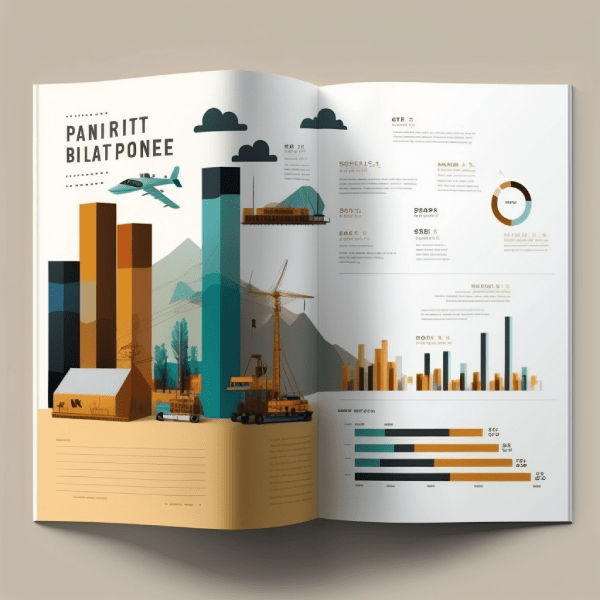What is an annual report and why it should be submitted?
The annual report is one of the most important and famous documents that a company must submit to the state of Estonia. It is a comprehensive report summarizing the activities of the company from the past financial year, and it is intended to give the shareholders and other interested people information about the business’ activities and financial performance. The obligation to submit it comes from the law.
Are all Estonian companies required to submit an annual report?
Yes, all Estonian companies, including sole proprietors, private limited and public limited companies must submit an annual report every year regardless if the company had any activity or not. In other words, if the company didn’t have revenue, it must still submit an annual report. This year Estonian government is starting to hand out fines much easier and the maximum amount is €3,200. Therefore, it is cheaper to submit the report than to get the fine. Even if you pay the fine, you still must submit the report.
Are there any exceptions where a business doesn’t have to submit an annual report?
There is only one exception. It is only in case the company was registered in the second half of the year – after the 1st of July. In that case, the company can submit the annual report for one and a half years together next year.
Establishing a company after the second half of the year can be beneficial if you know that your business will not have many transactions and have low financial performance. Establishing it earlier will only add costs in that case. However, no one prohibits submitting an annual report if you established your business during the second half of the year.
If my company didn’t submit a previous annual report can I submit it together with this year’s one?
Yes and no. Each report must be submitted separately for each year. However, you can start to prepare several reports at the same time but each report must be an independent document. When submitting a previous annual report, make sure that you select the right year for each report.
What does an annual report consist of?
The main parts are the balance sheet and the profit and loss account, and there may be some notes or annexes added to it. Small enterprises must also have a management report as a part of their annual report.
At the end of the annual report, there must be a decision regarding the company’s profits and the distribution of those profits. In other words, describing what will you do with the profits – whether it goes to dividends or reserves or it just remains there to be accumulated.
What kind of annexes can there be in an annual report?
There are several possibilities. An annex can, for example, be a more detailed description of assets or a more detailed description of obligations, a detailed turnover report, a detailed expenses report, etc. But it is important to note that usually these aspects are not required. However, you can always choose to add them to provide some further information about the data in the annual report. It is a good idea to include them if you want to present your annual report to your partners to have a better understanding of your business.
Are there cases where the Estonian business registry might ask for clarifications if you do not have annexes?
No, it is because if you don’t fill in the mandatory annexes then you will not be able to submit the report but otherwise they do not require additional annexes or ask for any clarifications.
What are the different business types and the contents of their annual reports?
There are 3 different classifications regarding the contents of an annual report.
A micro-enterprise is a company with up to 10 workers and a turnover of up to 2 million euros. The majority of Estonian companies are micro-enterprises, this includes businesses established by locals and e-residents. The micro-enterprise report is very compressed, and it contains minimum information. The balance sheet and the profit and loss account are very compressed. For micro-enterprises, the report management report is not required and annexes are only about related parties and labour costs.
The next group is small businesses that are up to 50 workers and have a turnover of up to 10 million. Small enterprises report is already more detailed the balance sheet and profit and loss report are presented in a more detailed way but still not too detailed and the management report is required.
Then there are medium-sized enterprises with up to 250 workers and turn turnover of up to 50 million. A medium enterprise also has more obligatory notes, but the company can choose which annexes to add to the report.
A large company has everything that is above that but large companies are not our customers they usually have a whole team of accountants working for them as they have higher demands.
What does a management report usually include?
A management report should describe how the year went. This should include the main events during the fiscal year and then some goals for the future.
How can I submit my annual report?
There are 3 different ways to submit an annual report and in pretty much all cases a board member who can represent the company has to give the final signature or confirmation signature.
All Estonian residents and e-residents with valid e-Residency cards can submit their annual reports electronically if they are board members or single shareholders of the company. It can be done through the business registry and it’s a quite easy and comfortable process.
If you hire an accountant to do an annual report for you, then you must grant the accountant access to the business registry and the accountant then fills in all the data needed for the report, and you just need to sign it digitally afterwards. If you don’t have an e-residency card, then the accountant can submit the report without granting permission, however, you need to sign the report on paper scan it and send it to the accountant and then the accountant can submit it for you.
There are also several situations where our customer’s e-Residency card has expired or is not working for some reason. Then the only way to submit the annual report is through the notary and that is also quite a pricey and complicated procedure. This method is the most time-consuming as documents need to be legalized/apostilled and translated in some cases. Once the documents are ready, you either need to visit a notary in Estonia in person, or have our advisors represent you at the notary.
What are the most common mistakes that an entrepreneur can do when submitting an annual report by themselves?
The most common thing is lack of knowledge and experience. Doing the accounting per Estonian law and reporting correctly is the most complicated part. This is because you need to have a full overview of what is happening in your company, how things should be registered, how to do the entries correctly, what are the laws, etc. Experienced accountants can submit an annual report in an average within one hour, of course, there are cases when it may take longer. However, being able to submit an annual report that fast only comes from the experience and knowledge of being an accountant and doing the job long enough to know all the necessary details.
How do I know that I have made a mistake in my annual report?
If you have made an obvious mistake in your annual report, the business registry will contact you and point out the mistake and ask you to correct it. They usually give 30 days to correct mistakes.
How can I correct a mistake in my previous annual report?
In case there was an error in your annual report and the business registry did not notify you, it is most likely an accounting error and the registry does not know the specifics of your accounting.
To correct the mistake, our primary suggestion is to hire an experienced accountant that can take look at all of the information and verify the correctness of the overall picture. Then the accountant can either contact the business registry or submit the correction as an annexe to your next annual report.
How to report an increase in share capital?
If you want to increase your business’ share capital, it is important that the decision and the payment were made during the same fiscal year as your annual report. On the report, you just increase the share capital. However, in case the decision was made, for example, in 2022, but the payment and registration of the increase happened in 2023, then the increase of share capital within the annual report of 2022 must state that the payment and registration are yet to be made. After the registration is made, the annual report for 2023 can show that the share capital is paid in full.
Also, it is important to remember that any share capital payments should be done from a personal account to the business account directly with a relevant description.
Want our help with submitting your annual report? Reach out to us!



